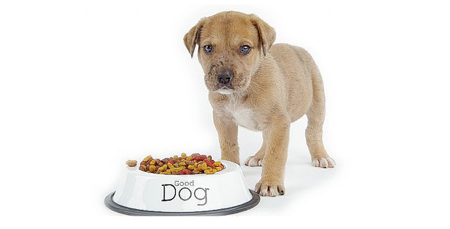Keeping Your Pet's Water and Food Bowls Cleaned Should be Part of Your Daily Routine
Something that’s often overlooked but is an important part of your pet’s overall health and well-being is the cleaning of their food and water bowls. Just like you need clean bowls with your meals, so do your pets. Not cleaning them often results in disease and bacteria building up in their bowl. Your pet is too important to make their bowl an attraction for bacteria, bugs and mold. Not to mention, it can be a turn-off to your pets and result in them not eating or drinking and getting sick down the line.
Most of us are guilty of “topping” off the water bowl when it gets close to empty but it’s important to wash the bowl and fill it with new water. Water that sits around will form a slimy residue along the inside of the bowl. Bacteria and fungus will begin to grow. Pets will also eat their food and then go to their water bowl, depositing food in the bowl while they drink.
Optimally, cleaning water and food bowls every day is the best – and if you’re feeding them wet food, you definitely should clean the bowls every day. If you are giving your pets dry food, PLEASE at least do a warm water rinse every day and clean the bowls with soap and water at least every few days.
There are several ways you can keep up with the cleaning. Most people will find using the dishwasher the easiest way to clean the bowls, but remember if the bowls are plastic to put them on the top part of the dishwasher to prevent melting. If you’re washing them by hand, use a mild detergent and warm/hot water. Rinse the bores thoroughly to make sure there is no soap residue left behind when you fill the bowls with water again because that could upset your pet’s stomach. Another option is to use disposable plastic inserts for your pets bowl which can be found at most pet food stores.
The best bowls to buy are stainless or porcelain bowls. Ceramic and plastic should be avoided as the nature of these materials provide a breeding ground for bacteria and other germs. Plastic bowls should also be avoided because dogs have a tendency to chew on them. Additionally, if your pets are free feeders (food left in dishes for hours), consider switching to scheduled feedings. Not only will the dish be cleaner, your dog will be less prone to becoming overweight and developing other health problems.
Another option to give your pet water is the electric or battery operated water fountain. These fountains have water circulating through a pump so the water is always moving. It encourages pets to drink more often and the circulating water will keep it much fresher. However, they will still be needed to be cleaned about twice a week as pet hair, dust and lint will collect in the system.
You should also keep an eye on food that has fallen out of the bowl as well as the placement of where the bowl is in the house. During summer time especially, bugs can congregate around your pet’s feeding area. Clean up any water or food spills on the floor when you notice them. You should also remember to store your pet’s food in a sealed container with a lid so the food stays fresh and so insects and rodents won’t get inside the food bag.
Don’t neglect the easy task of cleaning your pet’s water bowl. It will keep them more healthy and interested in eating and drinking what you are offering them. It’s another way of preventing them from becoming sick or dehydrated and it’s an easy thing to do.
